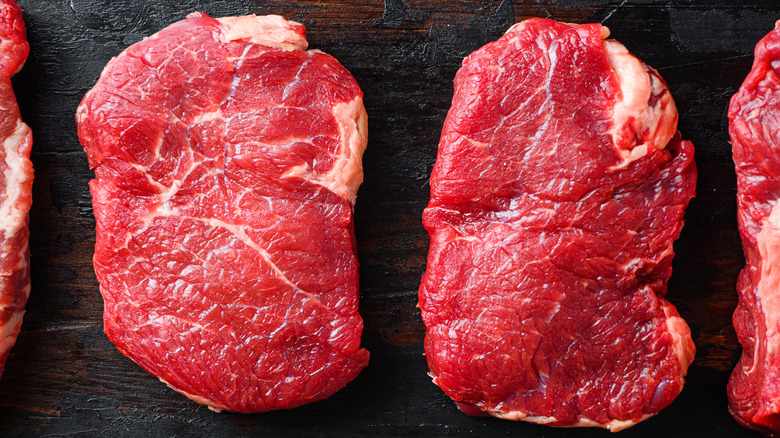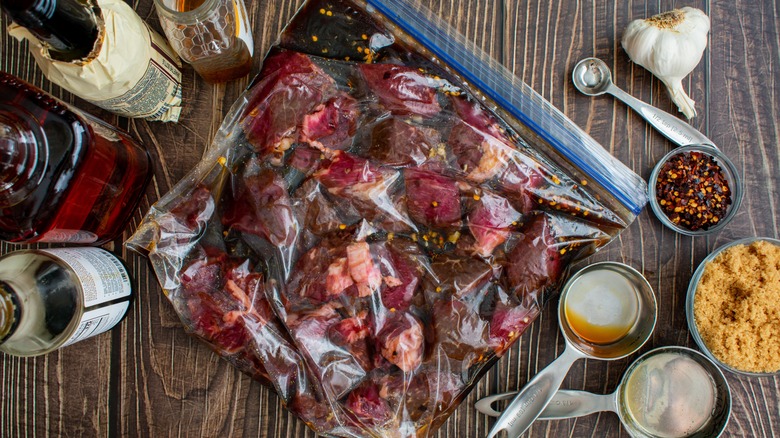The Popular Steak Cut That Isn't Worth Its Bargain Price
When evaluating the most popular cuts of steak, we ranked round steak last. Our taste testers found it to be tough, dry, flavorless, time-consuming, and requiring more effort to cook than other cuts. Clearly, round steak doesn't concern itself with imparting joy to its diners. Only after pounding it mercilessly, drowning it in brine, or subjecting it to enzymes does it begin to show signs of softening up to elevate your dining experience.
Visually, round steak is a plain piece of meat with very few white streaks running within its lean texture. That may not seem like anything, but looks are a game-changer when it comes to beef. It's those white streaks that give away beef's texture, it's called marbling, and it's a map of white fat lodged inside the beef muscle. As a result, meat with more marbling tends to be tender and juicy, which is a far cry from round steak.
It's no surprise, then, that round steak often lacks flavor. You can call it subtle, delicate, elusive in taste — it isn't exactly a party for your palate. Because you're dealing with lean meat, that buttery element from fat that enriches the deep and natural beef aromas is missing. While fat adds relief, moisture, juiciness, flavor, tenderization, and ultimately enjoyment to your steak meal, a lean cut like round steak lacks such crucial elements and often turns out chewy, dry, and bland. It goes to show just how the fat on your steak is more important than you realize.
Efficient ways to remedy round steak
So, are you destined to wrestle with chewy meat or brave out a bland meal every time you encounter round steak? Not at all. There are ways to overcome this steak's shortfalls, and they have a lot to do with introducing moisture to it. One rule of thumb is that, if you want the most tender steak, slow-cook it. Braising round steak also tenderizes and extracts its flavors, whether you use a crock pot, pressure cooker, or oven casserole dish.
Consider our extremely easy Swiss steak recipe that draws on the powers of braising via a quick sear and then a slow oven roast. After 2 hours of cooking at 300 degrees Fahrenheit, each bite of the round steak comes out tender and drenched in hearty beef flavors. The slow, moist method of cooking breaks down the tough connective tissue that plagues round steak into flavorful gelatin.
If you are pressed for time, you can always whip out a kitchen mallet and pound the steak to flatten it and weaken its connective tissue, making it easier to chew. However, this method demands some effort on your part, so, alternatively, you can take a more relaxed approach by marinating the steak in an acidic mix before cooking it. This way, you kill two birds with one stone by letting the marinade break down the steak's surface fiber and also adding delicious flavors to it — all with little to no effort.

